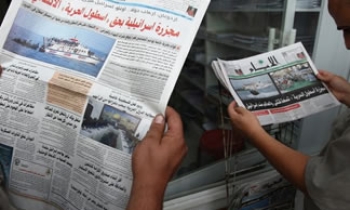Going by the latest NRS and IRS figures, Hindi dailies command a much higher position in terms of readership compared to English. So, why are ad revenues skewed in favour of English publications? While TAM data show that the gap is reducing, media planners attribute the gap to the target market, propensity to spend and brand requirement.
The latest TAM data indicate that the gap between ad spends on Hindi and English publication is slowly closing. For 2004, the share of ad spends in English publications was 44 per cent and for Hindi publications it was 22 per cent. For the previous year, the figures were 52 per cent for English and 20 per cent for Hindi, the rest being for regional publications.
Said Anita Nayyar, Executive Director-North, Starcom, "Choice of a publication is completely dependent on the brand requirement. It’s really not a case of Hindi versus English but reach of a publication in that market. If you are advertising a brand in a market like UP, you will obviously do it with leading publications in that market. On the other hand, if there is a six-metro launch for a brand, we will look at English publications in those metros. It varies from market to market and brand to brand. And usually, most campaigns are in English."
According to Sundar Raman, General Manger, Mindshare-Delhi, English publications still dominate large towns, as the "propensity of consumers to spend in those markets is higher than in the regional markets".
Reiterating a similar line of thought, Abbas Muni, General Manager, Carat-South & West, said, "It’s the perception that the propensity to spend lies with the higher class audience. However, we follow audience affinity, as reach is not the only objective. Even though Hindi publications have a higher reach, to my target audience it may not be the best fitting option."
This can be attributed to product lifecycle and target audience, according to Muni of Carat. Taking the example of mobile phones, he said, "For the high-end consumers, it has already penetrated enough, so another segment has to get added to it. Once you pass a stage of product lifecycle, you got to move into other audiences so that the category in itself grows."
Basabdatta Chowdhuri, General Manager, Madison Media, Delhi, is of the opinion that the scenario is now changing. "If you look at durables or electronics, there is a market growing beyond metros also. Though there is still a huge proportion of investment that goes into metros, money is shifting to the emerging markets. We look at the economic potential of the market as, beyond a point metros can’t grow," she said.
Raman is confident that the language discrimination of advertisers will soon come an end. "The size of the audience that language publications reach is far higher than what English publications do as the market is fragmented across many players. Marketers are starting to realise the potential of the non-metro markets and brand building through mediums other than TV is becoming critical. Therefore, more revenues are going in to these areas. There is a huge potential that exists for Hindi publications and, as I see it, it’s only a matter of time before language publications will be ahead in terms of revenue spent," he remarked.
Perhaps the sheer weight of the burgeoning readership that is veering towards Hindi and other language publications will finally swing advertisers and their monies towards these publications.









